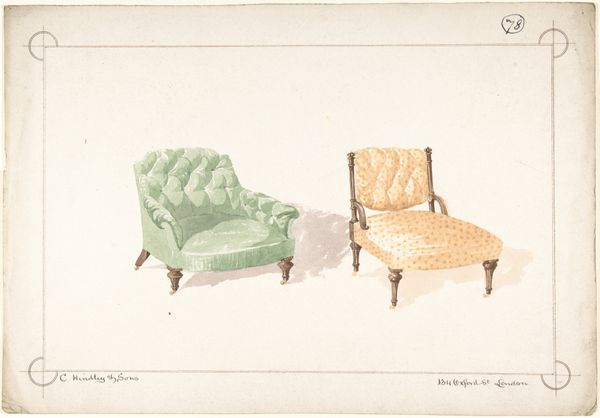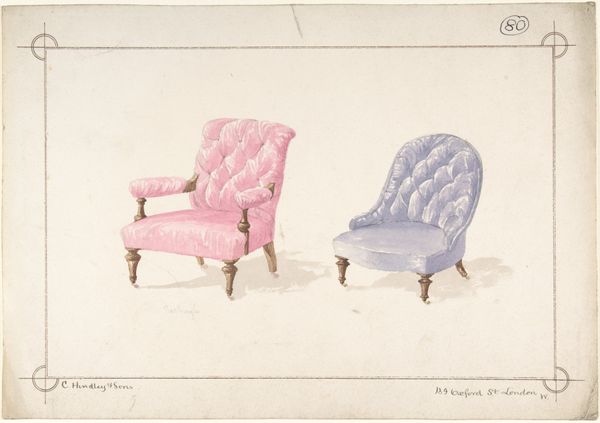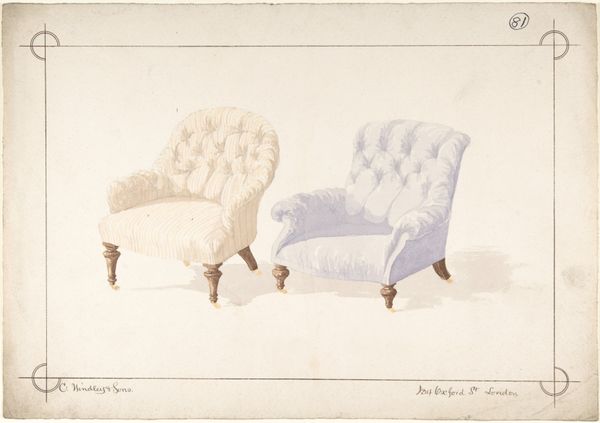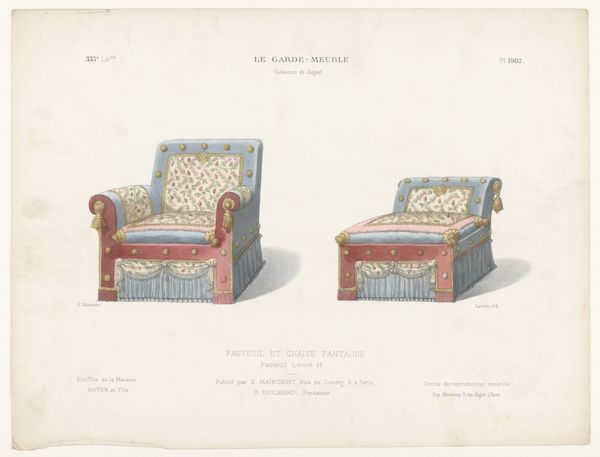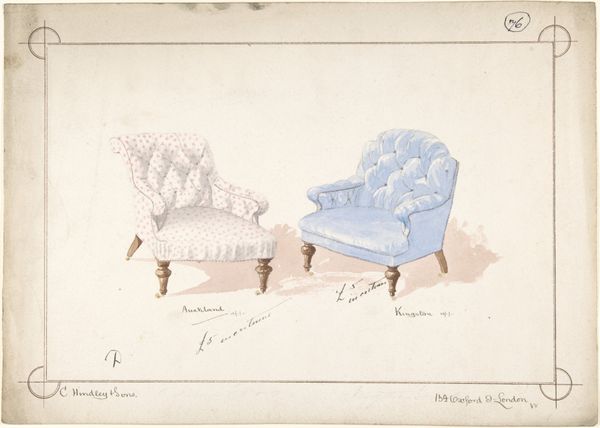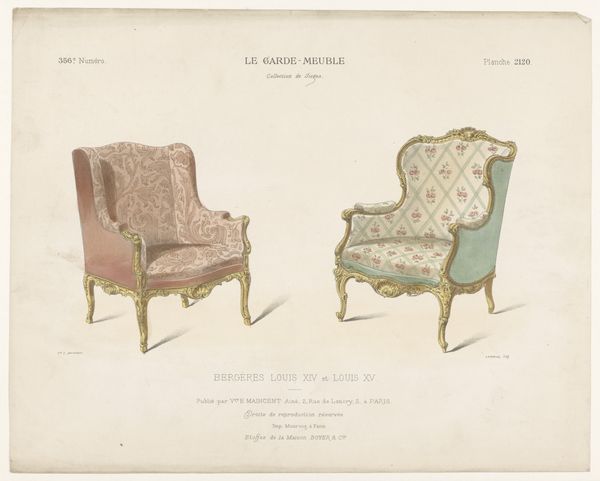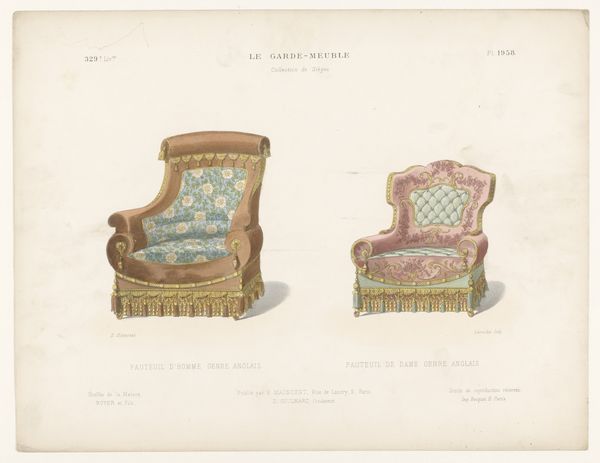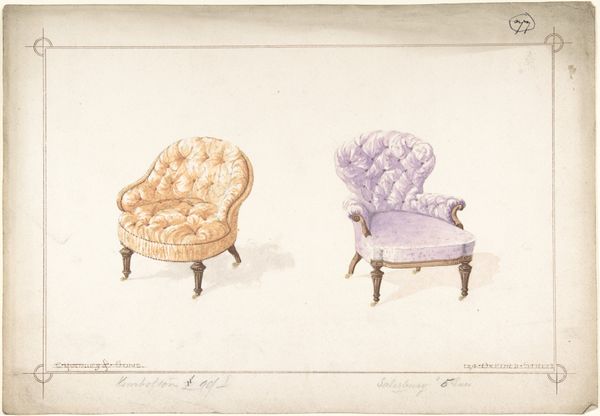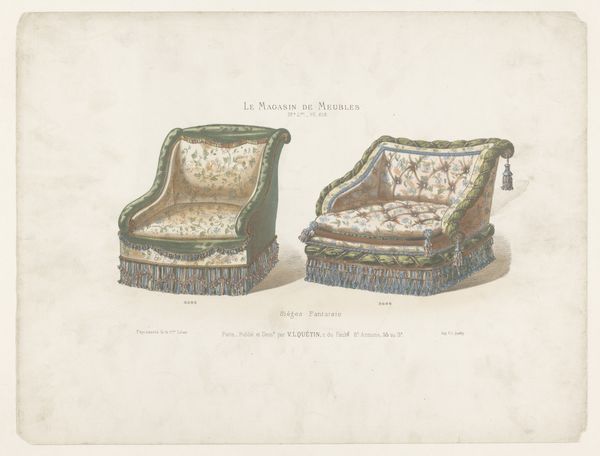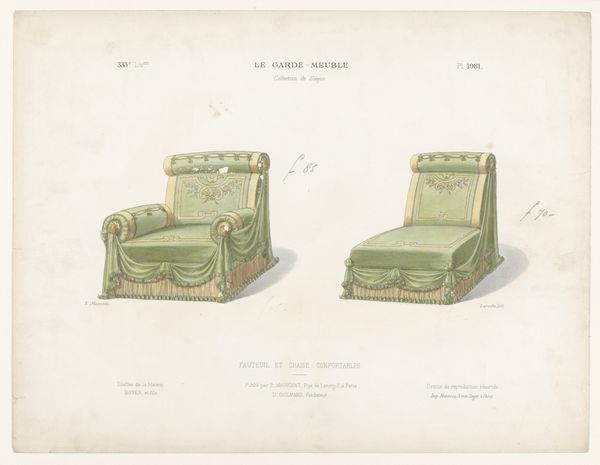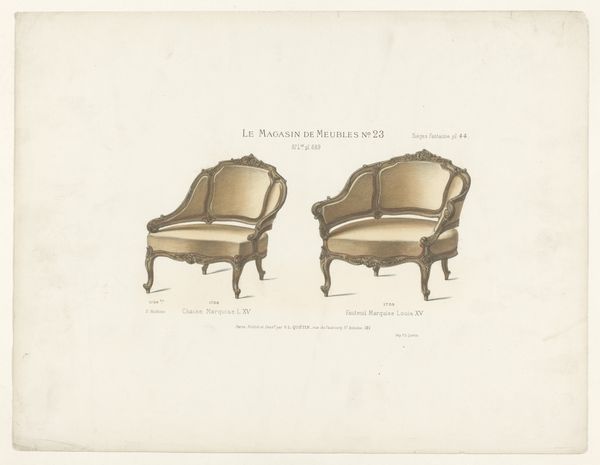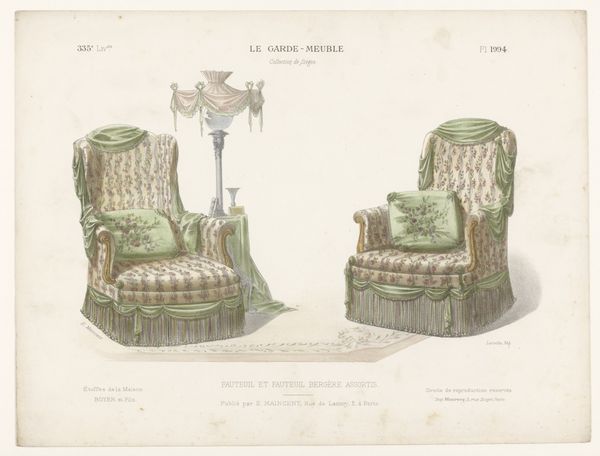
Dimensions: sheet: 10 x 14 1/4 in. (25.4 x 36.2 cm)
Copyright: Public Domain
Editor: Right, let's dive into this engaging piece from between 1841 and 1884 titled "Designs for Two Chairs" by Charles Hindley and Sons. It’s a mixed-media drawing, with watercolor and print on paper, currently residing at the Met. What immediately strikes me is the contrast between the detailed, almost plush green chair on the left, and the starker, simplified white chair to its right. What's your take on it? Curator: This drawing offers insight into 19th-century furniture production and the evolving relationship between design and manufacture. Notice how the materials are rendered - the attempt to portray texture in the green chair hints at the rise of mass-produced textiles imitating luxury. The simplified rendering of the second chair could suggest different price points or target markets. It begs the question: were these designs intended for artisanal production, or were they conceived with industrial manufacturing in mind? Editor: That's interesting, I hadn't thought about it in terms of production costs. Do you think the Arts and Crafts movement had an impact on how these chairs were designed or perceived? Curator: Absolutely. This drawing sits squarely within the Arts and Crafts period. However, rather than celebrating handcrafted uniqueness, these designs engage with the anxieties surrounding industrialization. Consider the role of the designer as separate from the maker. Are these designs liberating or exploitative to the worker who will eventually bring them to life, and who may have little creative input? How might consumerism intersect here? Editor: So, the drawing isn't just about aesthetics; it reflects the economic and social conditions of its time? Curator: Precisely. By examining the material conditions of its production, from the pigments used to the paper itself, and by situating the chairs within the context of Victorian manufacturing, we uncover the complex relationship between art, labor, and consumer culture. Editor: This has totally shifted my understanding. I now see these chair designs as a visual commentary on the changing world of work and consumption in the 19th century, instead of merely pretty pictures. Thanks! Curator: Indeed. It reveals how seemingly simple design can illuminate larger socioeconomic shifts.
Comments
No comments
Be the first to comment and join the conversation on the ultimate creative platform.
